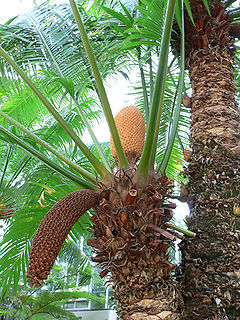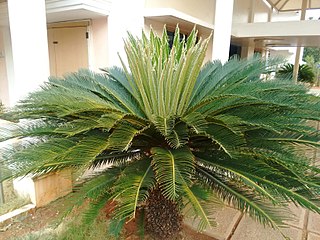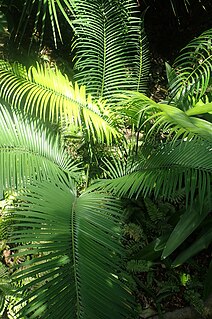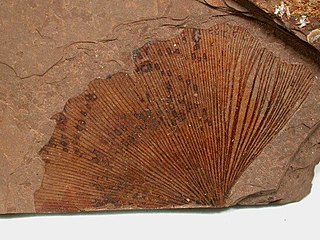
Sago is a starch extracted from the spongy centre, or pith, of various tropical palm stems, especially those of Metroxylon sagu. It is a major staple food for the lowland peoples of New Guinea and the Moluccas, where it is called saksak, rabia and sagu. The largest supply of sago comes from Southeast Asia, particularly Indonesia and Malaysia. Large quantities of sago are sent to Europe and North America for cooking purposes. It is traditionally cooked and eaten in various forms, such as rolled into balls, mixed with boiling water to form a glue-like paste (papeda), or as a pancake. Sago is often produced commercially in the form of "pearls". Sago pearls can be boiled with water or milk and sugar to make a sweet sago pudding. Sago pearls are similar in appearance to the pearled starches of other origin, e.g. cassava starch (tapioca) and potato starch, and they may be used interchangeably in some dishes.

Cycads are seed plants with a very long fossil history that were formerly more abundant and more diverse than they are today. They typically have a stout and woody (ligneous) trunk with a crown of large, hard and stiff, evergreen leaves. They usually have pinnate leaves. The species are dioecious, therefore the individual plants of a species are either male or female. Cycads vary in size from having trunks only a few centimeters to several meters tall. They typically grow very slowly and live very long, with some specimens known to be as much as 1,000 years old. Because of their superficial resemblance, they are sometimes mistaken for palms or ferns, but they are not closely related to either group.

Stangeria eriopus is a cycad endemic to southern Africa. It is the sole species in the genus Stangeria, most closely related to the Australian genus Bowenia, with which it forms the family Stangeriaceae.

Cycadales is an order of seed plants that includes all the extant cycads. These plants typically have a stout and woody (ligneous) trunk with a crown of large evergreen leaves. They usually have pinnate leaves. The individual plants are either all male or all female (dioecious). Cycads vary in size from having trunks only a few centimeters to several meters tall. They typically grow very slowly and live very long, with some specimens known to be as much as 1,000 years old. Because of the superficial resemblance, they are sometimes confused with and mistaken for palms or ferns, but are only distantly related to either.

Cycas is a genus of plants belonging to a very ancient lineage, the Cycadophyta, which are not closely related to palms, ferns, trees or any other modern group of plants. They are evergreen perennials which achieved their maximum diversity in the Jurassic and Cretaceous periods, when they were distributed almost worldwide. At the end of the Cretaceous, when the non-avian dinosaurs became extinct, so did most of the cycas in the Northern Hemisphere.

Cycas revoluta, is a species of gymnosperm in the family Cycadaceae, native to southern Japan including the Ryukyu Islands. It is one of several species used for the production of sago, as well as an ornamental plant.

Cycas balansae is a species of cycad in the genus Cycas, native to southwestern China and adjacent northern Vietnam, where it occurs in dense mountain rainforests.
Cycas chamaoensis is named after the only known habitat of this species, on and near Khao Chamao mountain in Khao Chamao District, Thailand. Stems are arborescent, either erect or decumbent. Leaves numerous, exceeding 60 per crown, 1.2-2.5 meters in length, ending in terminal spine. Petiole 30–60 cm, glabrous and partially spiny. Leaflets in 85-155 pairs, and lanceolate, glabrous and angled forward at 60-70 degrees.

Fossil Cycad National Monument was a national monument in the U.S. state of South Dakota beginning in 1922. The site contained hundreds of fossil cycads, one of the world's greatest concentrations. Because vandals stole or destroyed all of the visible fossils, it was withdrawn as a national monument in 1957. It is located in northwestern Fall River County, on U.S. Route 18, northeast of the city of Edgemont.

Nong Nooch Tropical Botanical Garden is a 500-acre (2.0 km2) botanical garden and tourist attraction at kilometer 163 on Sukhumvit Road in Chonburi Province, Thailand. It can be reached via bus, taxi or private land transportation. It is also a major scientific center dedicated to cycads, with its own Cycad Gene Bank.

Ginkgo is a genus of highly unusual non-flowering seed plants. The scientific name is also used as the English name. The order to which it belongs, Ginkgoales, first appeared in the Permian, 270 million years ago, and is now the only living genus within the order. The rate of evolution within the genus has been slow, and almost all its species had become extinct by the end of the Pliocene; the exception is the sole living species, Ginkgo biloba, which is only found in the wild in China, but is cultivated across the world. The relationships between ginkgos and other groups of plants are not fully resolved.
Boganiidae is a family of beetles, in the suborder Polyphaga. Members of the family are found in southern Africa, Australia and New Caledonia. Adults and larvae are pollenivorous, feeding on the pollen of cycads and Myrtaceae, Meliaceae, Cunoniaceae and Elaeocarpaceae angiosperms. Metacucujus and Paracucujus act as pollinators for cycads Encephalartos and Macrozamia respectively. This association with cycads goes back to at least the Mid-Cretaceous, with an extinct form being found with preserved cycad pollen in 99 million year old Burmese amber.

The Durban Botanic Gardens is situated in the city of Durban, KwaZulu-Natal, South Africa. It is Durban's oldest public institution and Africa's oldest surviving botanical gardens. The gardens cover an area of 15 hectares in a subtropical climate.

Cycas pectinata was the fourth species of Cycas to be named; it was described in 1826 by Scottish surgeon and botanist Francis Buchanan-Hamilton from Kamrup, Assam in northeast India. The species is one of the most widespread cycads. It is found in the northeastern part of India, Nepal, Bhutan, northern Burma, southern China (Yunnan), Bangladesh, Burma, Malaysia, Cambodia, northern Thailand, Laos, and Vietnam. Cycas pectinata usually grow at elevation 300 m to 1200 m and in difficult terrains. In China, it grows in dry, open thickets in limestone mountains, red soil in sparse monsoon forests. Cycas pectinata grows up to 40 feet (12 m) tall and has very large, ovoid male cones. The tallest Cycas pectinata is a female plant in North Kamrup, Assam which measures 52.8 feet (16.1 m). The tree is the world's tallest Cycas plant. In Northeast India, the species is under severe threat due to clearing of forest and over collection of male cones for preparation of traditional medicines. The species is listed in CITES Appendix II and IUCN Redlist.

Aulacaspis yasumatsui, or cycad aulacaspis scale (CAS), is a scale insect species in the genus Aulacaspis that feeds on cycad species such as Cycas revoluta or Dioon purpusii. Other common names include the cycad scale, the sago palm scale, and the Asian cycad scale. This is a serious pest of cycads which can kill its host plant.

Cycas siamensis is a species of Cycad endemic to Myanmar, Thailand, and Vietnam.
Cycas clivicola is a species of cycad in Thailand, Cambodia, Vietnam, and Malaysia. It is found on limestone outcrops, as well as on offshore islands.
Cycas pranburiensis is a species of cycad endemic to Thailand. It is found only in the Khao Sam Roi Yot National Park area of Prachuap Khiri Khan Province. It is named after Pran Buri District in Thailand, where it was discovered.
Cycas macrocarpa is a species of cycad in Malaysia and Thailand.












